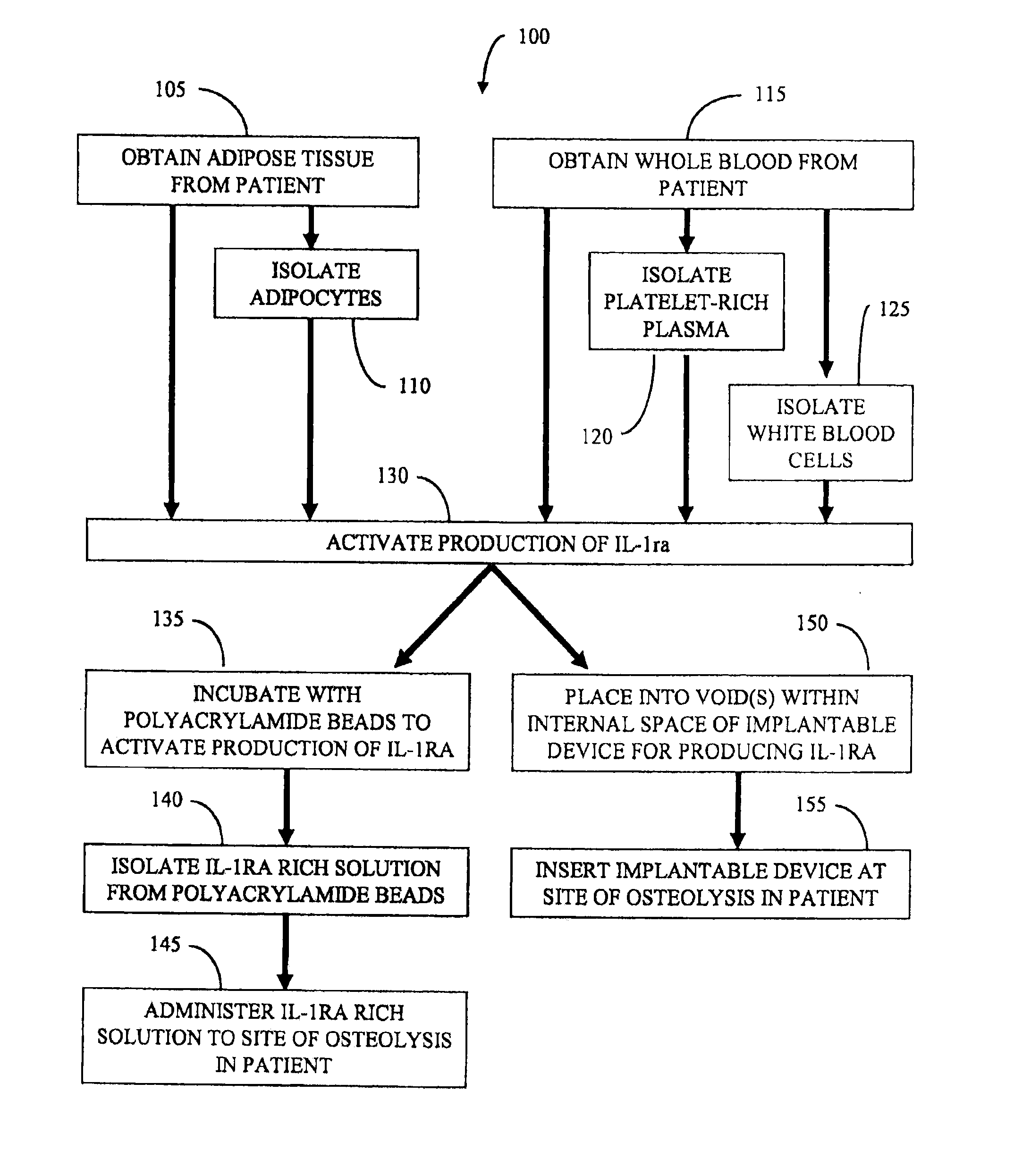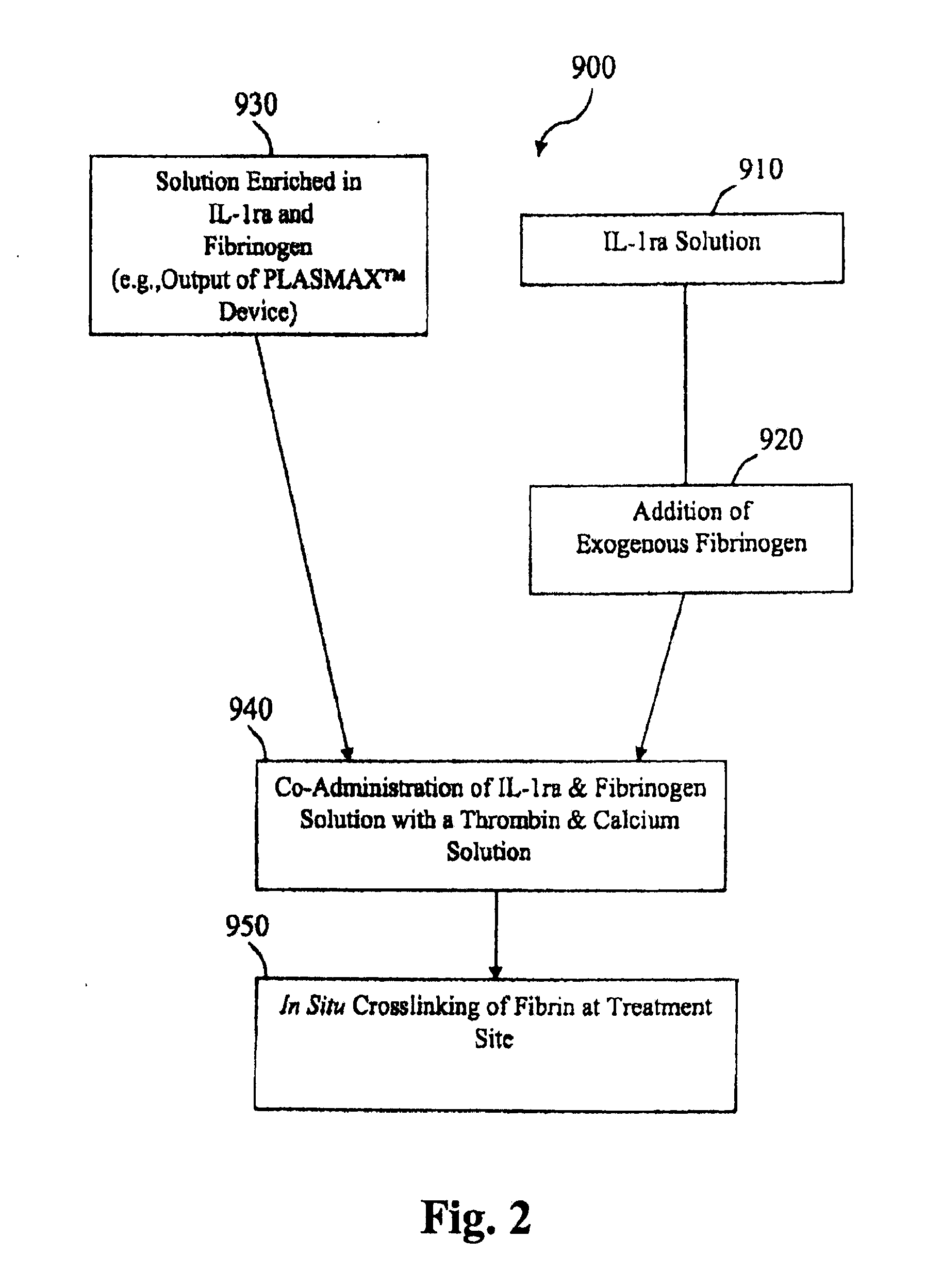Osteolysis treatment
a treatment and osteolysis technology, applied in the field of osteolysis treatment, can solve the problems of increasing the time before revision, and inflammation cascade in the affected joint, so as to reduce inflammation, prevent osteolysis, and mitigate the progression of osteolysis
- Summary
- Abstract
- Description
- Claims
- Application Information
AI Technical Summary
Benefits of technology
Problems solved by technology
Method used
Image
Examples
example 1
[0067]Adipocytes are prepared as follows. Adipose tissue is harvested by liposuction from a patient, minced into small pieces (about 1 cm3), and digested in 2 mg / mL type I collagenase (Worthington Biochemical Corp., Lakewood, N.J.) under intermittent mechanical agitation in a water bath at 37° C. for 180 minutes. Digestion is neutralized by the addition of whole blood obtained from the patient. The cell suspension is centrifuged (300×g for 7 minutes at 25° C.) followed by removal of the supernatant from the cell pellet. The pellet is then resuspended in platelet rich plasma to provide a liquid volume comprising adipocytes and platelet rich plasma.
[0068]The adipocytes and platelet rich plasma are combined with polyacrylamide beads to activate production of IL-1ra. After incubating for about 4 hours, the mixture is centrifuged and the supernatant is isolated to provide an IL-1ra rich solution. The IL-1ra rich solution is administered to an artificial knee joint in the patient by injec...
example 2
[0069]A method for treating osteolysis due to wear debris at a site of an artificial joint implant in a patient includes using an implantable device to produce interleukin-1 receptor antagonist in vivo. The implantable device includes an enclosed tubular body including a lumen where the tubular body comprises a first bioresorbable material. A second bioresorbable material is within the lumen of the tubular body. The second bioresorbable material comprises a plurality of gelatin beads from about 10 microns to about 20 microns in diameter. One end of the tubular body comprises a self-healing surface that can be pierced with one or more needles and adipose tissue, adipocytes, whole blood, PRP, and / or white blood cells are loaded into the lumen of the device. The self-healing surface is operable to substantially seal the puncture hole once loading is complete and the needle(s) withdrawn. In this way, the beads of the second bioresorbable material and the loaded adipose tissue, adipocyte...
PUM
| Property | Measurement | Unit |
|---|---|---|
| Temperature | aaaaa | aaaaa |
| Time | aaaaa | aaaaa |
| Time | aaaaa | aaaaa |
Abstract
Description
Claims
Application Information
 Login to View More
Login to View More - R&D
- Intellectual Property
- Life Sciences
- Materials
- Tech Scout
- Unparalleled Data Quality
- Higher Quality Content
- 60% Fewer Hallucinations
Browse by: Latest US Patents, China's latest patents, Technical Efficacy Thesaurus, Application Domain, Technology Topic, Popular Technical Reports.
© 2025 PatSnap. All rights reserved.Legal|Privacy policy|Modern Slavery Act Transparency Statement|Sitemap|About US| Contact US: help@patsnap.com



